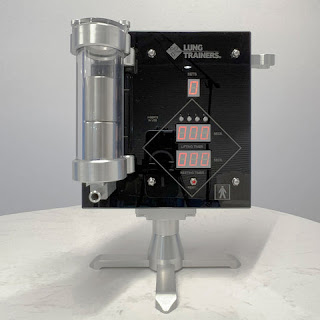Study Links Exercise to Stronger Breathing Muscles For COPD
Exercise might not be the first thing on your mind if you have COPD. But studies show that doing particular workouts helps strengthen your respiratory muscles, giving your lungs extra power.
The Journal of Applied Physiology claims that "Strength-training exercises may also provide additional advantages. They might also build up the muscles in the rib cage, abdominal wall, and upper extremities in addition to strengthening the diaphragm. The rise in PEmax is consistent with a strengthening-training impact on the abdominal and ribcage expiratory muscles. The slight rise in biceps circumference is compatible with the development of the muscles of the upper extremities. Patients with chronic obstructive pulmonary disease (COPD) frequently use the muscles of the rib cage, upper extremities, and abdominal wall during breathing, therefore training with these movements may be more advantageous than training maneuvers that only target the inspiratory muscles."

When patients are taught the proper breathing patterns and their breathing muscles are strengthened, pulmonary rehabilitation treatment frequently finds that this produces the best results. Exercise is crucial since your muscles become weaker the less active you are. Weak muscles require MORE oxygen, which leads to a cascade of shortness of breath. Some individuals who were receiving continuous oxygen therapy are able to stop using their concentrator and enjoy life without being tethered to a tube by adhering to a sound exercise regimen, a healthy diet, and a doctor's plan of care.
Your diaphragm is a muscle, did you know that? You can strengthen this muscle, which is essential for breathing, to help you breathe in more air. Your pectoral muscles in your chest, your intercostal muscles along your rib cage, and your abdominal muscles, which are as follows, are other muscles you employ to breathe.
The deepest of your abdominal muscles is the transverse abdominis. It connects to your ribs and pelvis, goes from your stomach to your back, and is an essential breathing muscle.
- Rectus abdominis, or the "6 pack," is what we refer to.
- External oblique: These are rib-side obliques.
- Internal oblique muscles are located within the ribs.
7 Helpful Tips for COPD Exercise Success
- Start out slowly and increase your endurance with time. Perform breathing exercises until you are able to rejoin the group if you are having trouble breathing.
- If an inhaler has been recommended, keep it close at hand.
- Before beginning, clear your lungs of mucous. If you are receiving oxygen therapy and are linked to a tube, be aware of its location to avoid tripping.
- If you are using oxygen, never smoke or be around smoke.
- Consider carefully achieving a healthy body weight because being overweight reduces your oxygen intake and heightens your sense of shortness of breath.
- Consistency is the secret to success if you want to get the best results.
For more info:- COPD breathing exercises
Source Url:- https://sites.google.com/view/lungtrainers12/home

Comments
Post a Comment